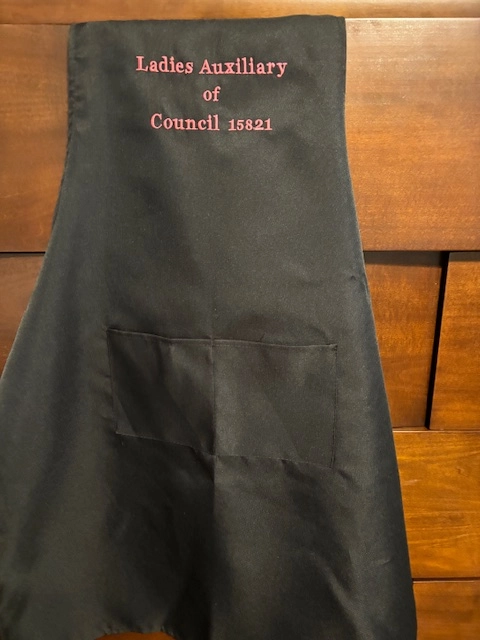Heat Transfer on T-Shirts and Aprons - Customized Styles and Logos
Wiki Article
The Art of Customized Needlework: Unlocking the Keys to Creating One-of-a-kind and Unforgettable Layouts
The secrets to developing custom needlework styles that astound the eye and leave a lasting impact lie in a delicate equilibrium of method, creative thinking, and focus to information. As we delve right into the world of custom needlework, we discover the nuanced interplay in between thread choice, stitch intricacy, and style customization that elevates a plain garment to a job of art.Choosing the Right Needlework Threads
When selecting embroidery threads, what essential aspects should you take into consideration to guarantee the best results for your custom styles? The option of embroidery thread is crucial in identifying the final outcome of your stitched design.
Additionally, the weight or thickness of the thread plays a substantial duty in the look of the needlework. Thicker threads can add dimension and texture to your design, while finer threads are perfect for intricate details and tiny text. In addition, taking into consideration the shade fastness and washability of the thread is essential to guarantee that your custom-made styles preserve their high quality and vibrancy in time. By carefully evaluating these variables and picking high-quality threads that meet your specific requirements, you can enhance the aesthetic appeal and durability of your stitched developments.
Discovering Various Stitch Techniques
To dive into the world of 'Discovering Different Stitch Strategies', one have to comprehend the intricacies and subtleties that each stitching technique brings to the art of embroidery. Various stitch techniques not just add visual passion however additionally contribute to the total texture and dimension of the layout. One popular stitch strategy is the satin stitch, which involves carefully stuffed parallel stitches to create a smooth and glossy surface area, ideal for completing forms and developing strong lays out.On the various other hand, the backstitch is a functional method typically utilized for detailing and adding great details. It includes stitching backwards to develop a solid line of needlework. Additionally, the French knot stitch adds a tactile aspect to layouts, best for developing textured accents like flower facilities or decorative touches.
Exploring various stitch techniques allows embroiderers to play with light, darkness, and deepness within their styles, boosting the aesthetic appeal and artistic quality of their embroidery tasks. By mastering various stitching techniques, one can open limitless opportunities for producing special and remarkable customized needlework items.
Incorporating Personalized Layout Elements
Having actually explored the details of various stitch methods such as the satin stitch, backstitch, and French knot, the emphasis now changes in the direction of including personalized design components in customized embroidery tasks. Personalized design components play an essential role in making embroidery tasks genuinely unique and remarkable.Another method to incorporate individualized design components is by including symbols or concepts that hold special definition to the recipient or reflect their passions and personality. navigate to this site Incorporating a preferred blossom, animal, or hobby-related sign can make the needlework design a lot more purposeful and customized. In addition, choosing colors that reverberate with the this page recipient or align with the desired theme can additionally boost the personalization of the embroidery job.
Understanding the Art of Color Coordination
One secret element of shade control is recognizing shade concept. This consists of recognizing just how different colors connect with each other, the feelings they share, and how they can be integrated to develop visually attractive layouts. By applying Continued color concept concepts, embroiderers can produce unified color palettes that enhance the total look of the layout.
In addition, taking notice of comparison is crucial in color control. Utilizing contrasting colors can assist specific aspects of the design pop, boost readability, and develop a visually vibrant embroidery piece. By grasping the art of color coordination, embroiderers can boost their designs and produce memorable pieces that reverberate with customers and customers alike.
Enhancing Texture With Advanced Needlework Stitches

Bullion knots, on the other hand, can be used to develop twisted, ropelike components that include a glamorous feeling to the embroidery. Experimenting with these advanced embroidery stitches allows you to push the borders of standard embroidery and create absolutely one-of-a-kind and aesthetically appealing textures in your layouts.
Final Thought
Finally, the art of custom-made embroidery entails a mix of choosing the right strings, checking out various stitch strategies, integrating customized layout aspects, mastering shade sychronisation, and enhancing texture with sophisticated stitches. By understanding and applying these crucial elements, embroiderers can develop distinct and remarkable styles that display their imagination and ability. Embroidery fanatics can unlock the keys to creating stunning and custom pieces that stick out and leave a lasting impact.Report this wiki page